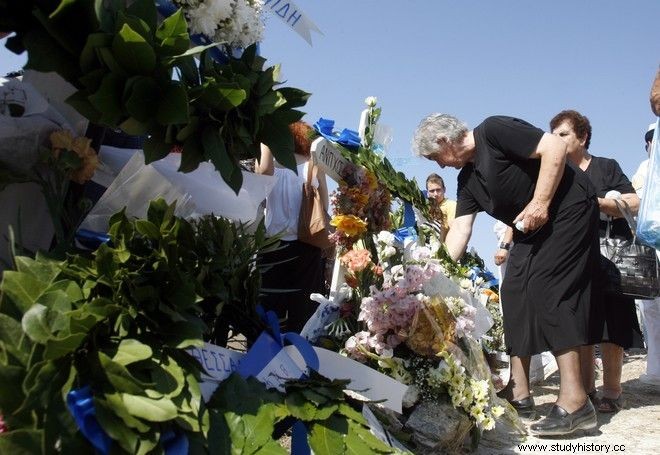In the early hours of July 11, 2011 many were suddenly awakened by a deafening noise, their minds returning to the events of another July – you see the fear of war remains alive several years later. Others woke up to a phone call full of anxiety, one of those that "freeze" you and make time stand still. Others never woke up again.
That morning the atmosphere was heavy and confusion was widespread, since no one could understand what exactly had happened. The information spoke of a huge explosion at the Evangelos Florakis Naval Base in Mari , near Larnaca. The extent of the destruction and the death toll were not accurate, but you could "read" the pain.
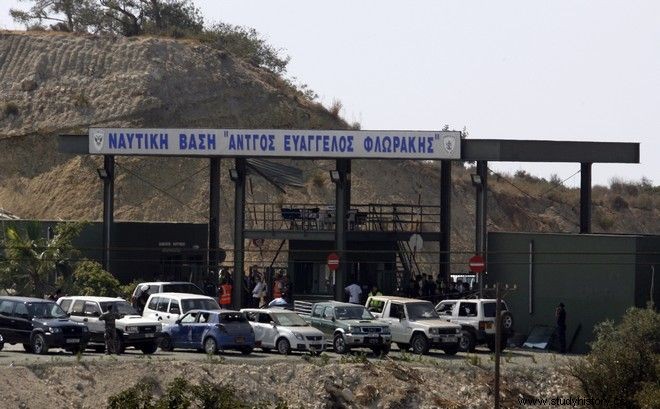
A few hours later the worst would be confirmed. Cyprus was now faced with yet another tragedy and the date would be written in black letters in its history book. Another sad July, another mournful anniversary. And 10 years later , the memories from that morning have not only not faded, but come to life and remind us of those who were lost so unfairly.
The explosion in Mari was characterized as the biggest disaster in Cyprus in peacetime.
The deadly explosion of July 11, 2011
The deadly explosion occurred at 5:50 in the morning at the "Evangelos Florakis" naval base in Mari, turning the area into a skull place. The explosion came from a fire in containers (containers), which were kept at the naval base and which contained war material. These were 98 containers and 231 packages of Iranian ammunition, weighing 1,400 to 1,500 tons, and had been seized since 2009.
The explosion caused a shock wave of three kilometers, which swept everything in its path, causing those who were very close to the explosion site to be killed instantly, while several dead were found with only human limbs. The explosion and the shock wave were so strong that they destroyed the neighboring "Vasilikos" Power Station, caused damage even to nearby villages, while pieces of metal weighing five kilograms were found kilometers away.
Prior to the explosion, at approximately 4:00 a.m., technicians at the Power Station had reported flashes in the sky coming from the camp site and small explosions at the same location. At 4:30 a fire broke out in the containers. The sailors were informed and started an operation to extinguish it, while two fire engines left from EMAK Kofinou in the direction of Mari and the Service Officer with other military and soldiers started heading towards the fire site.
At 04:50 the Commander of the Navy, Andreas Ioannidis, arrived at the Naval Base, asking the GEEF to send helicopters, while a few minutes later the Commander of the Base, Lambros Lambrou, also arrived. At 05:20 the fire had already spread and those at the naval base were trying, making superhuman efforts, to put it out. Half an hour later, it was all over. A huge black cloud covered the area, which was now a bombed out landscape of corpses, human limbs, shell casings, molten metal and debris.
The explosion killed 13 people, including sailors, officers and firefighters, while another 62 were injured in various parts of their bodies. Many of them face dozens of problems to this day, 10 years later, either physically or psychologically from the great shock and what they saw in the broken landscape of the naval base. People of various ages lost their lives unjustly and others were forever scarred by the tragic event.

The time of the load and the SOS
The boxes had arrived in Cyprus in 2009, with the Cypriot-flagged ship Monchegorsk, which departed from Iran bound for Syria. US Navy ship intercepted Monchegorsk in the Red Sea and upon investigation, was found to be in violation of Security Council Resolutions. Then the Republic of Cyprus seized the ship, which anchored in the port of Limassol and after an inspection it was decided that the 98 containers should be placed at the Naval Base in Mari.
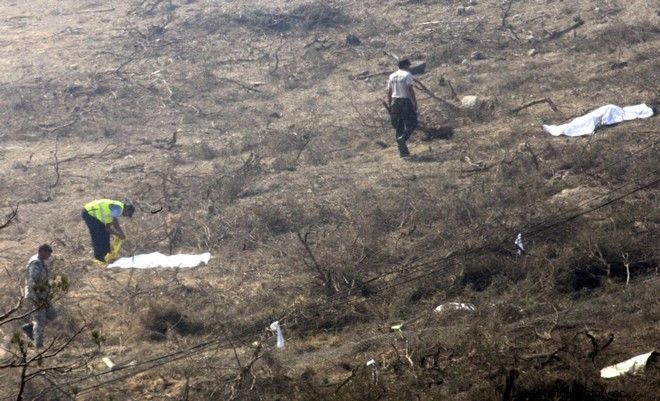
For their protection, a concrete base had been built so that the ground would not give way, while the containers were placed in such a way that their door was not accessible and a wire mesh was also installed. However, these measures were far from adequate long-term ammunition storage measures requiring constant ventilation, low temperature, humidity control, minimal contact with ground, and easy access for inspections.
In May 2009, the new Chief of the National Guard, in a letter to the Minister of Defense, informed him of his concerns regarding the storage of the material and the dangers of excessive exposure to the sun, while in June of the same year, the department customs of the Republic of Cyprus informed the Ministries of Defense, Foreign Policy and Finance that the explosive material had passed into the ownership of the Republic, since no one claimed it. According to the law governing the matter, there were three options:destroy the material, give it to the public or sell it. However, due to the diplomatic problems created by the case, it was decided to continue his custody.
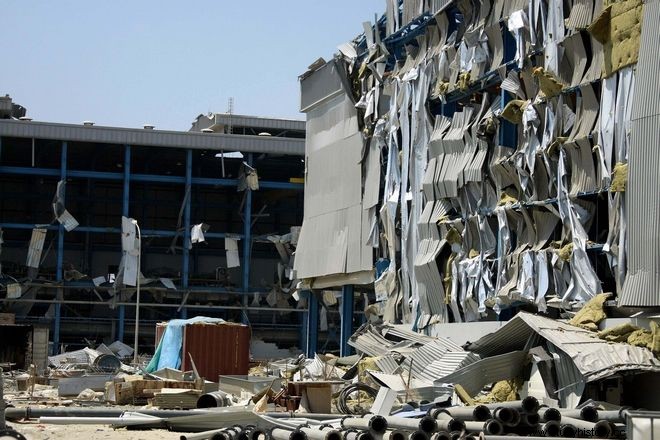
The then President of the KD, Dimitris Christofias, committed to the president of Syria not to deliver the cargo to a third party, while in 2010, as part of the agreement with Iran, it was finally decided to destroy the material. Despite this, no action was taken, while, at the same time, the pressures and pleas of the National Guard to remove the material due to its dangerousness and the practical problems it created, continued. Between January 2011 and June 2011, there were repeated requests for visits by the UN Security Council to inspect the ammunition, but although the Foreign Ministry responded positively, it kept postponing the visit.
"Sprinkle the boxes with sea water"
The Navy Commander and one of the victims, Andreas Ioannidis, made constant appeals for the removal of the containers, constantly sending letters and sounding the alarm for several months, even a few days before the explosion, but his efforts constantly fell on deaf ears. The great evil would be done with mathematical precision, but the authorities chose not to deal seriously with the issue.
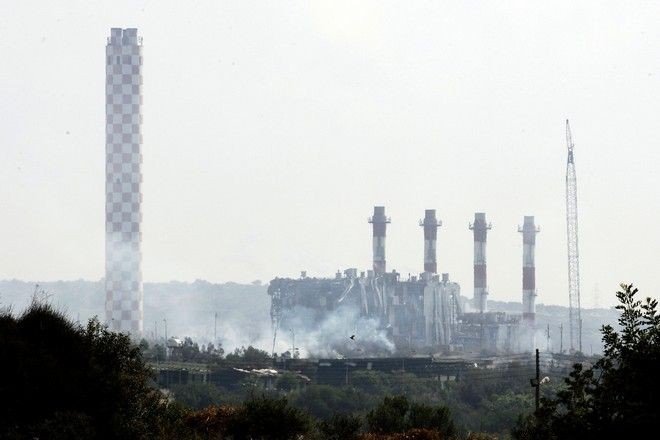
In fact, just a week before the deadly explosion, cargo guards at the naval base in Marie, found that one of the containers had deteriorated and grown in volume. After the authorities were informed, it was decided to set up a special team, while the instruction given was to soak the deformed boxes with sea water, in order to lower their temperature and prevent them from exploding! Indeed, on July 8, 2011, by order of the Chief of the National Guard, an army fire engine sprinkled the containers with water.
Political responsibilities and "I don't know"
On the same day of the explosion, the Minister of Defense Kostas Papakostas and the head of the National Guard Lt. Gen. Petros Tsalikidis submitted their resignations. A week later, the Minister of Foreign Affairs, Markos Kyprianou, resigned for moral reasons, while the Cabinet also dismissed the Deputy Chief of the National Guard, Lt. Gen. Savvas Argyrou. The first statements of the then President of the Republic, Dimitris Christofias (AKEL), provoked the anger of public opinion, while people demanded his resignation.
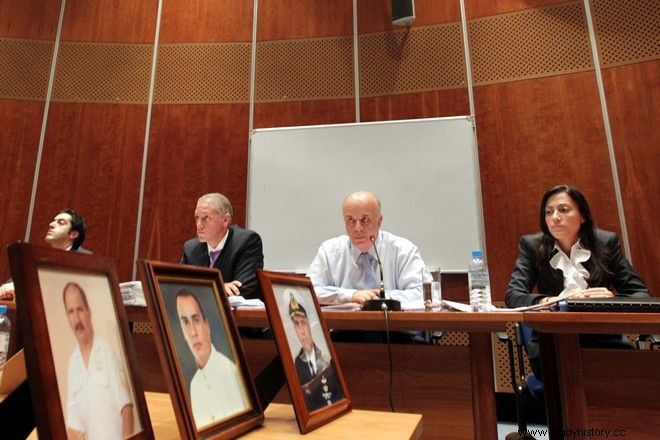
He commissioned an independent commission to study the events that led to the explosion. Three months later, in October 2011, the committee led by Poly Polyviou delivered a finding implicating the President of the Republic. According to the conclusion, the decision to detain and unload the containers, the uncontrolled and irresponsible storage of the cargo in Mari, the knowledge of its dangerousness by the authorities and the indifference on their part to proceed with the necessary actions, the omissions and the general mistakes manipulations burden the head of state.
It is worth noting that in September 2011, in his testimony, Dimitris Christofias had claimed - among other things - that he was not aware of the cargo or the danger or the possibility of an explosion, that he did not know where the Mari location was, but neither and that it was adjacent to the EAC station. « There was an underestimation of risk. Why should I take this responsibility since I was not informed?" , he declared, while in the end he did not accept any personal and direct responsibility, only institutional and indirect. "I am directly responsible, logically and institutionally, for the mistakes and omissions of my ministers..." , were his words.
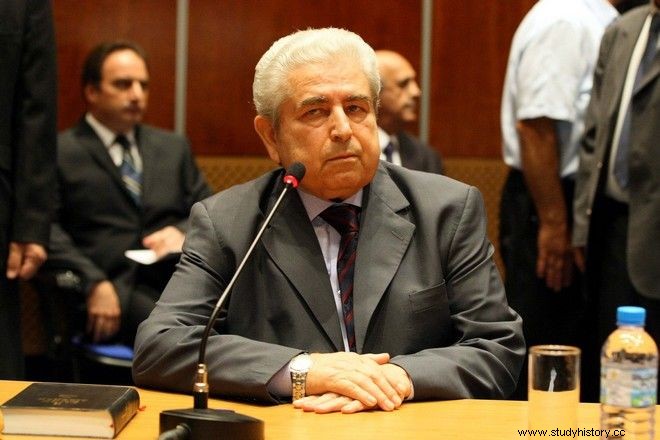
"I respect and honor the President of the Republic both as a person and as a political leader. But what was the President's reaction? "I don't know". This is unacceptable. Invoking ignorance and lack of information, in such an important matter, creates not only a matter of trust in the President himself and the Government, but also in the state itself. The President assigns responsibilities to his colleagues – rightly so, but he also has them himself.” , Polys Polyvius had said during the delivery of his conclusion.
It is noted that Kostas Papakostas was found guilty of murder, with the court stating that he "closed his eyes to the danger" regarding the storage of explosives. He was sentenced to 5 years in prison and died while serving his sentence, while the head of the National Guard Petros Tsalikidis faced a military court in Greece, after interstate agreements between Greece and Cyprus granted immunity to the Greek military. He was convicted of manslaughter and served 7 years in prison, appealed and was released without bond. The Criminal Court of Larnaca also convicted Andreas Nikolaou, Charalambos Charalambous and Andreas Loizidis on the charge of causing death by negligence. The former Minister of Foreign Affairs M. Kyprianou and the former deputy head of the National Guard S. Argyrou were acquitted and cleared of the charges.
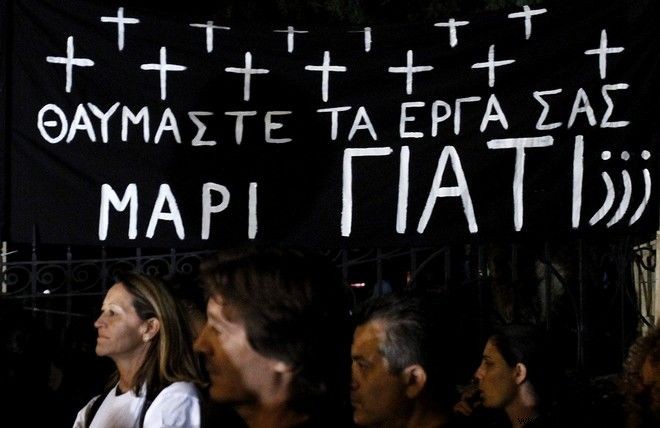
The subsequent political and economic crisis
The tragedy in Marie had a great impact on the political, social and economic development of the country. As far as the political part is concerned, after the murderous incident the ruling AKEL party was isolated, while the popularity of President Christofias decreased significantly. For the record, AKEL, the historic left in Cyprus, assumed executive power in 2008 as the main ruling party for the first time in the island's history, managing to prevail amid a highly polarized climate. Five years later, in 2012 and having preceded the explosion in Mari, the political climate of the place was completely different.
Apart from the political crisis that was created, Cyprus also experienced the economic consequences of the great disaster. In particular, the economic crisis reached the island in 2009 in the form of a slight recession, however, after the tragedy Cyprus suffered heavy blows and it took years to recover. The serious damage to the "Vasilikos" Power Station had significant effects on the economy of Cyprus. The damages were initially estimated at 700 million euros, although later the cost of reconstruction was estimated at 300-400 million euros, while the reduction in production and supply of electricity led to a number of other consequences.

It is worth noting that as a result of the explosion and destruction of the Power Station, the supply of electricity to the public was interrupted and the Cyprus Electricity Authority (ECA) later implemented rolling blackouts of 2 to 3 per area, which however did not concern airports, hospitals or tourist areas, while on July 16 an agreement was signed for the transfer of electricity from the occupied area of Cyprus until the end of August. At the same time, after the explosion in Mari, there was a decrease in GDP, a loss of household welfare, a decrease in the business cycle, and an increase in unemployment. A few months after the tragedy, in the fall of 2011, the first series of austerity measures were adopted by the government.
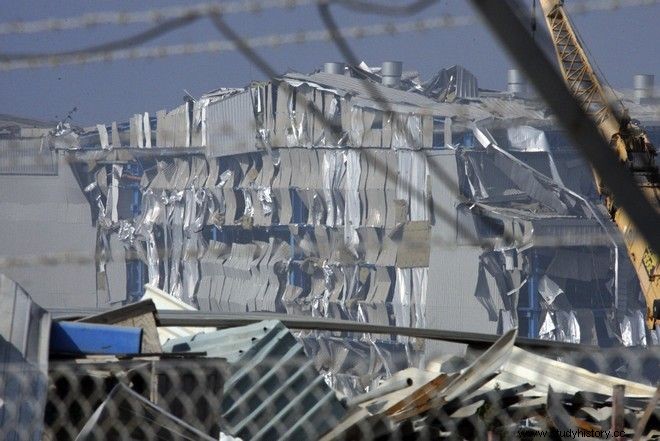
The 13 dead, rage and mother - symbol
From the first days of the tragedy to today, 10 years later, the anger about the explosion in Marie has not died down. The citizens, completely disappointed by the incompetence and irresponsibility of the authorities, held demonstrations in various cities of Cyprus and demanded justice. Despite any attribution of blame and condemnations, public opinion finds unacceptable the attitude of the state, its negligence and how it allowed such a great disaster to happen and 13 lives to be lost.
It is worth noting that the relatives of the victims were then treated with great disrespect, since according to testimonies, even several days after the tragedy no one entered the process of explaining to them what exactly happened, while seeing the politicians trying to escape and transfer responsibilities to each other, at the moment when they themselves had lost their loved ones in the worst way and completely unjustly, the wounds grew more and more, instead of healing.
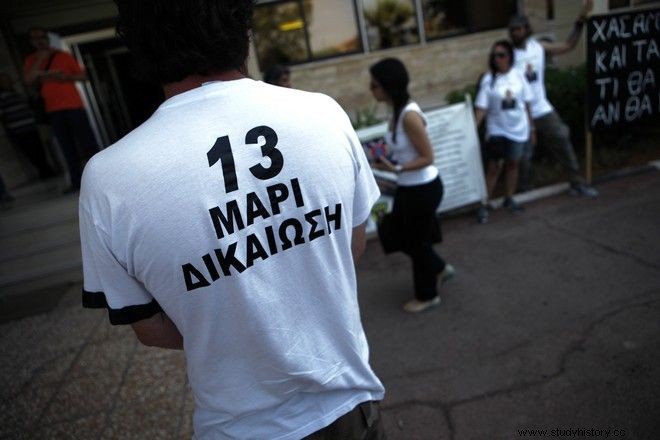
The 13 names of the dead - fathers, children, husbands, brothers and friends - are as follows:
Captain Ioannidis Andreas, Navy Commander - Lieutenant Lambros Lambros, Commander of the Naval Base - Chief Cleanthous Kleanthis - Kelevis Herakleous Michalis - Sailor Christoforou Miltiadis Giorgos Giakoumis - Firefighter Adamos Adamou - Sailor Antonis Charalambous (died three days after the accident).
Among the dead were two twin brothers, only 19 years old. Their mother, Popi Christoforou, is a person - a symbol of the tragedy in Marie, as she lost both her children that day. She herself participated in many struggles for accountability and justice for the victims. "Mom, let's go put out the fire, we'll talk in a bit..." , were the last words she heard from her children and then she never saw them again. As relatives of the twins have described at times, the two brothers were inseparable. Even in death. "Miltos was the driver of the tanker and had to be the first on the scene. Although another sailor had been assigned to go with him, Christos said:"You stay behind and I will go with my brother." They couldn't bear to be away from each other". , the cousin of the two boys has stated.
